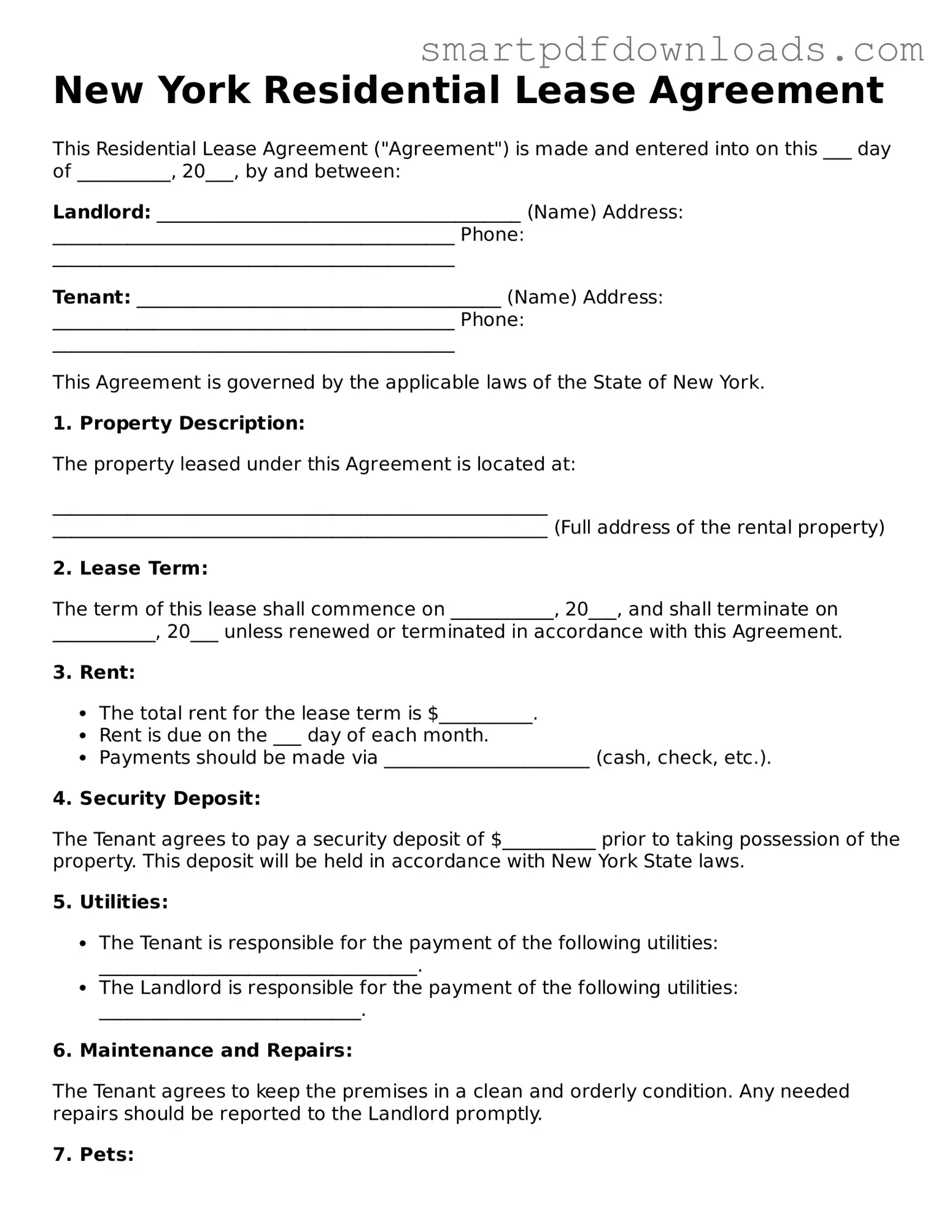New York Residential Lease Agreement
This Residential Lease Agreement ("Agreement") is made and entered into on this ___ day of __________, 20___, by and between:
Landlord: _______________________________________ (Name)
Address: ___________________________________________
Phone: ___________________________________________
Tenant: _______________________________________ (Name)
Address: ___________________________________________
Phone: ___________________________________________
This Agreement is governed by the applicable laws of the State of New York.
1. Property Description:
The property leased under this Agreement is located at:
_____________________________________________________
_____________________________________________________
(Full address of the rental property)
2. Lease Term:
The term of this lease shall commence on ___________, 20___, and shall terminate on ___________, 20___ unless renewed or terminated in accordance with this Agreement.
3. Rent:
- The total rent for the lease term is $__________.
- Rent is due on the ___ day of each month.
- Payments should be made via ______________________ (cash, check, etc.).
4. Security Deposit:
The Tenant agrees to pay a security deposit of $__________ prior to taking possession of the property. This deposit will be held in accordance with New York State laws.
5. Utilities:
- The Tenant is responsible for the payment of the following utilities: __________________________________.
- The Landlord is responsible for the payment of the following utilities: ____________________________.
6. Maintenance and Repairs:
The Tenant agrees to keep the premises in a clean and orderly condition. Any needed repairs should be reported to the Landlord promptly.
7. Pets:
Pets are (allowed/disallowed). If allowed, the Tenant agrees to follow the following pet policy: __________________________________.
8. Termination of Agreement:
- Notice of termination by the Tenant must be given at least __________ days before the intended move-out date.
- The Landlord may terminate this agreement with appropriate notice as specified by New York law.
9. Signatures:
The parties hereby agree to the terms of this Agreement as evidenced by their signatures below:
Landlord Signature: ________________________________ Date: ___________
Tenant Signature: ________________________________ Date: ___________
This lease agreement constitutes the entire agreement between the parties. Any modifications must be in writing and signed by both parties.
